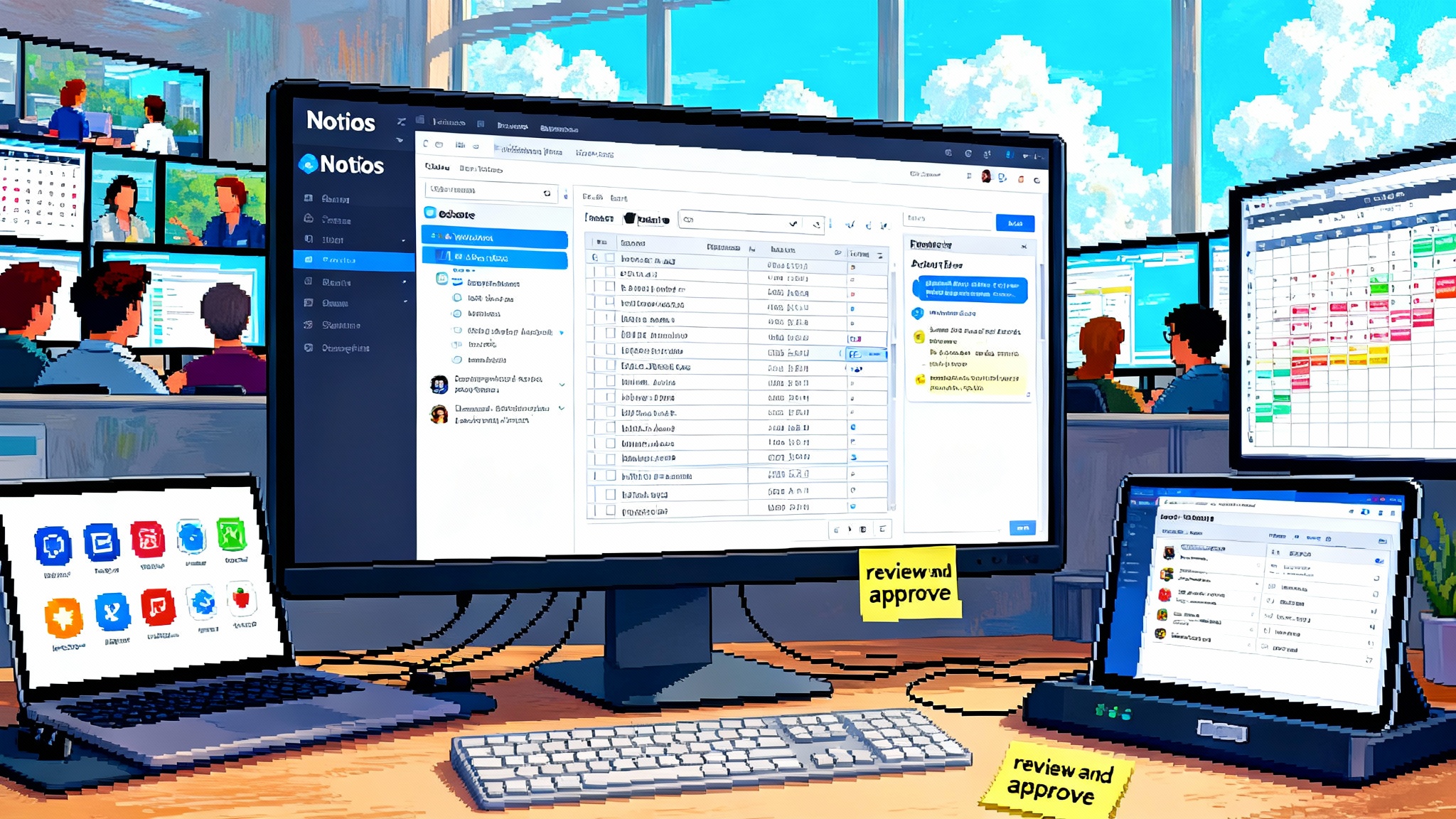DualEntry's 24-hour ERP migration puts NetSuite on notice
On October 2, 2025, DualEntry announced $90 million and a NextDay Migration that promises a 24 hour ERP cutover. If it works at scale, switching costs collapse, composable stacks grow, and new control risks emerge.

The day the ERP wall cracked
On October 2, 2025, DualEntry said the quiet part out loud. The startup raised fresh capital and asserted it can move companies off legacy enterprise resource planning systems in one day. The funding headline matters because it signals mainstream confidence, but the migration claim is the real aftershock. As reported in Reuters on $90 million raise, DualEntry highlighted a NextDay Migration feature that compresses a months long project into 24 hours. If that timeline holds for mid market and up, switching costs for finance software just dropped by an order of magnitude.
This is not only a shot across the bow of NetSuite. It is a direct challenge to an industry equilibrium that has stood for two decades. If migrations truly take a day, lock in weakens, portfolios go composable, and automated agents can finally take the wheel for more of the finance stack.
Why migration is the real moat in ERP
Ask any chief financial officer why they keep paying rising fees for an aging system. The usual answer is not features. It is risk and the sheer hassle of moving. Traditional migrations resemble moving an entire factory while it is running. You must inventory every machine, label every part, forklift it to a new building, reassemble it, and pass safety checks before the next shift shows up.
In finance software those machines are the general ledger, subledgers for accounts payable and accounts receivable, revenue recognition, multi entity consolidations, bank feeds, tax engines, and hundreds of brittle integrations. Mapping years of historical data, keeping referential integrity intact, replatforming custom reports, revalidating controls, retraining staff, and reconciling opening balances is why typical ERP switches take months and sometimes years. Implementation firms earn their keep because the risk of a mispost or a missed cutoff can jeopardize audits and, in public companies, regulatory filings.
That is the wall DualEntry is attacking. If the wall collapses, the city behind it changes.
How a 24 hour migration could work
One day sounds like a stunt. It might not be if you decompose the work and automate the repetitive parts. Here is a plausible blueprint for a 24 hour cutover, drawn from best practices in data engineering, controls, and lived experience from finance teams.
-
Discovery by ingestion, not interviews. Instead of weeks of workshops, the system connects to the source ERP, banks, billing, and payroll via application programming interfaces, reads metadata, and produces a draft map for chart of accounts, vendor and customer masters, open items, and historical transactions.
-
Schema inference and mapping. Machine learning models propose mappings from the old chart of accounts to the new. Think of this as a bilingual dictionary that also understands grammar. The tool recognizes typical patterns like cash, accrued expenses, deferred revenue, and intercompany eliminations, and flags outliers that need human review.
-
Controlled extract with change data capture. To avoid downtime, the system performs an initial extract of historical data, then tails a stream of new transactions so the source and target remain in sync until the moment of cutover.
-
Synthetic trial close. Before anyone swaps screens, the tool runs a trial close in the target system, producing side by side financials and subledger tie outs. Differences are localized by lineage so accountants can trace each discrepancy back to the originating document.
-
Automated testing harness. A battery of tests checks completeness, double entry integrity, aging buckets, and cutoff logic. The harness recalculates opening balances from first principles and compares them to the target. If the variance is outside tolerance, the migration pauses for human review.
-
Parallel close and controlled cutover. For one reporting cycle, finance teams run both systems in parallel. If the numbers tie within tolerance and controls pass, the cutover happens with a toggle.
-
Forensics and audit pack. The system produces an auditor ready pack that documents the mapping rules, reconciliation checks, exceptions, approvals, and a cryptographic hash of the final opening balances.
DualEntry’s own marketing echoes several of these steps, including a guarantee to have customers live shortly after kickoff. The company’s implementation page states customers can go live the next day with a CPA led process. Skeptics should ask for the specifics behind each stage, but the architecture is not science fiction. It borrows from proven data migration patterns, then applies specialized accounting knowledge and aggressive automation.
If migration collapses, composability rises
Software buyers behave differently when exit costs drop. In finance that shift would be profound.
- Module level choice. Today, companies often pick a single suite because switching components later is punishing. If migration becomes routine, teams can assemble a composable stack. Keep the general ledger but swap revenue recognition, or adopt a new accounts payable automation tool without fearing the next audit.
- Contract leverage. Vendor negotiations change when time to leave is measured in days. Renewal cycles become real price discovery moments rather than defaults. Discounting and service quality both move when a credible exit is two days away.
- Agent readiness. Automated agents perform better when systems expose clean event streams and when data can be reshaped quickly. With lower switching costs, buyers can pick agent friendly tools and avoid being trapped in click heavy workflows. For a look at the operational layer that coordinates agents, read how agent control towers arrive.
- Faster innovation cycles. Finance begins to behave like marketing technology, where best of breed tools come and go without months of replatforming. The payback window for trying something new shortens dramatically.
The startup categories this could unlock
When a barrier falls, new neighborhoods get built. A one day migration opens practical markets that were niche before.
- Migration agents. Specialized agents that learn a company’s chart of accounts, policies, and workflows, then continuously maintain the mapping library. These agents would watch for schema drift in upstream systems, repair mappings automatically, and propose improvements before the next close. See how data plane agents that work are changing expectations for reliability.
- Controls as a platform. Instead of bolt on checklists, new platforms can orchestrate controls across systems. Imagine opinionated templates for revenue recognition or intercompany eliminations that can be applied, tested, and audited across stacks.
- Independent verification. Third parties that exist only to verify migrations. They generate reconciliation proofs, run parallel closes, and issue attestation reports that auditors can trust. Think of them as a rating agency for data fidelity.
- Shadow ledgers. Lightweight, append only ledgers that mirror the official books and maintain hashes of every entry. If you switch systems, you retain an immutable record that spans vendors.
- Finance observability. Tools that monitor event flows, identify stuck transactions, and alert on control breaches with the same rigor software teams use for uptime.
- Agent safety and guardrails. With more automation comes the need for policies that define what agents may post, when they must escalate, and how to roll back errors with a full trail. A market for prebuilt policy packs will emerge.
The risks and how to manage them
No one should switch their general ledger lightly. Here are the real risks and concrete ways to handle them.
- Data fidelity. Risk: historicals are incomplete or misclassified and subledgers do not tie. Action: require a sample based tie out plan before kickoff, then a full reconciliation pack that proves completeness and balances derived from first principles.
- Control regressions. Risk: a fast cutover bypasses segregation of duties or approval chains. Action: insist on control mapping documents that show equivalence to your current system, then run a staged user acceptance test with control owners signing off.
- Compliance gaps. Risk: edge cases in revenue recognition, tax, or multi entity consolidation are mishandled. Action: run a synthetic trial close with at least three tricky scenarios from your last audit and document the results.
- Parallel close fatigue. Risk: teams burn out running two systems. Action: timebox the parallel period to one cycle and assign a tiger team. Anything unresolved triggers a hold on cutover.
- Vendor lock in 2.0. Risk: the new vendor makes leaving easy today but harder later with proprietary mappings, private agents, or opaque data formats. Action: negotiate an exit clause that guarantees a full, documented export, including mapping rules and agent prompts, at no cost.
- Model risk. Risk: automated mapping models drift or misinterpret new transaction patterns. Action: require model update transparency, change logs, and canary tests on small data slices before global deployment.
What incumbents will do next
NetSuite, Sage Intacct, SAP, and others will not stand still. Expect three responses.
- Implementation guarantees. Incumbents will move from hours based consulting to outcome guarantees for new modules and migrations inside their ecosystem. They will package templates that compress time to value and reduce the perceived risk of staying put.
- Verified export and import. To blunt the threat, incumbents may introduce standardized export packs with checksums, lineage, and replayable events. The pitch will be that customers can leave for a year and come back with no data loss.
- Agent frameworks. Vendors will roll out safe agent frameworks that operate within guardrails and produce auditor friendly logs. For examples of coordination patterns across tools, revisit how proactive BI agents are here and what that implies for governance.
If that happens, the competition shifts from feature against feature to service level against service level. Who can prove fidelity faster. Who can attest controls with less friction. Who can cut the time to a clean audit opinion.
A buyer’s checklist for a 24 hour cutover
If you are evaluating a one day migration, put structure around the promise.
- Define success metrics. Specify materiality thresholds, reconciliation tolerances, and control equivalence up front. Align with your auditors before kickoff so acceptance criteria are unambiguous.
- Demand a dry run. Run a synthetic trial close with three sample months, including a quarter end. Require line by line tie outs for revenue, cash, deferred revenue, and at least two complex areas unique to your business.
- Appoint an escalation path. Assign a decision making trio across accounting, systems, and security. Empower them to pause the cutover if conditions fail.
- Lock a parallel close window. One cycle, timeboxed. Publish the schedule and the acceptance tests so everyone knows the finish line.
- Negotiate exit terms now. Ask for a detailed exit package with full data, mapping rules, and agent configuration. Include a service level for export time and test it during the first year.
- Budget for verification. Hire an independent verifier or allocate internal audit time for reconciliation proofs. Treat it as the cost of buying speed without buying future headaches.
What this means for startup founders
If you are building in finance, your roadmap should assume customers can switch faster.
- Be a great neighbor. Invest in clean event streams, idempotent application programming interfaces, and exhaustive audit logs. If customers can leave in a day, they can join in a day when your integration is painless and your controls are clear.
- Sell verification, not vibes. Speed is a feature, but trust is the product. Package reconciliations, control equivalence, and audit packs as first class deliverables. Price them as guarantees, not as optional services.
- Design for agent ecosystems. Assume your product will be orchestrated by third party agents and internal automations. Provide signed webhooks, versioned schemas, and reversible operations. The products that thrive in an agent led world will expose proofs, not just APIs.
- Instrument everything. Build observability into the product so that every event can be traced and replayed. This reduces mean time to resolution when auditors or customers question an outcome.
The fine print on DualEntry’s claim
A single day will not fit every company. Multi decade histories, exotic customizations, and heavy workflows can stretch any timeline. The right question is not whether every business can move in 24 hours. It is whether most can move in a week with the final 10 percent resolved during a parallel close. That is still a revolution compared with six month projects that sap morale and budget.
It also matters whether the migration engine works as well leaving DualEntry as it does entering it. The promise of one day out must match the promise of one day in. Buyers should test both directions early. During contracting, require proof that your data, mappings, and agent prompts can be exported in human readable form and replayed into a competitor.
Finally, beware of the theater around speed. A fast go live that hides reconciliation debt is not a win. Push vendors to show real tie outs, not just green checkmarks. Ask for an accounting lead to walk you through the reconciliation logic, the edge cases, and the audit pack. When you see how differences are located and resolved, you will know whether the magic is engineering or smoke.
The bottom line
Finance has been stuck with high friction plumbing that punishes curiosity. A credible one day migration changes the calculus. It invites teams to try modern tools, to let agents handle drudge work, and to treat the general ledger as a platform rather than a fortress.
The next decade of enterprise finance will not be won by whoever has the longest feature list. It will be won by whoever makes change safe, measurable, and fast. DualEntry may have fired the starting gun. Now the race is on to make migration speed, verification depth, and control clarity the new standard. If a company can leave in a day, the finance stack will finally compete on results instead of inertia.








